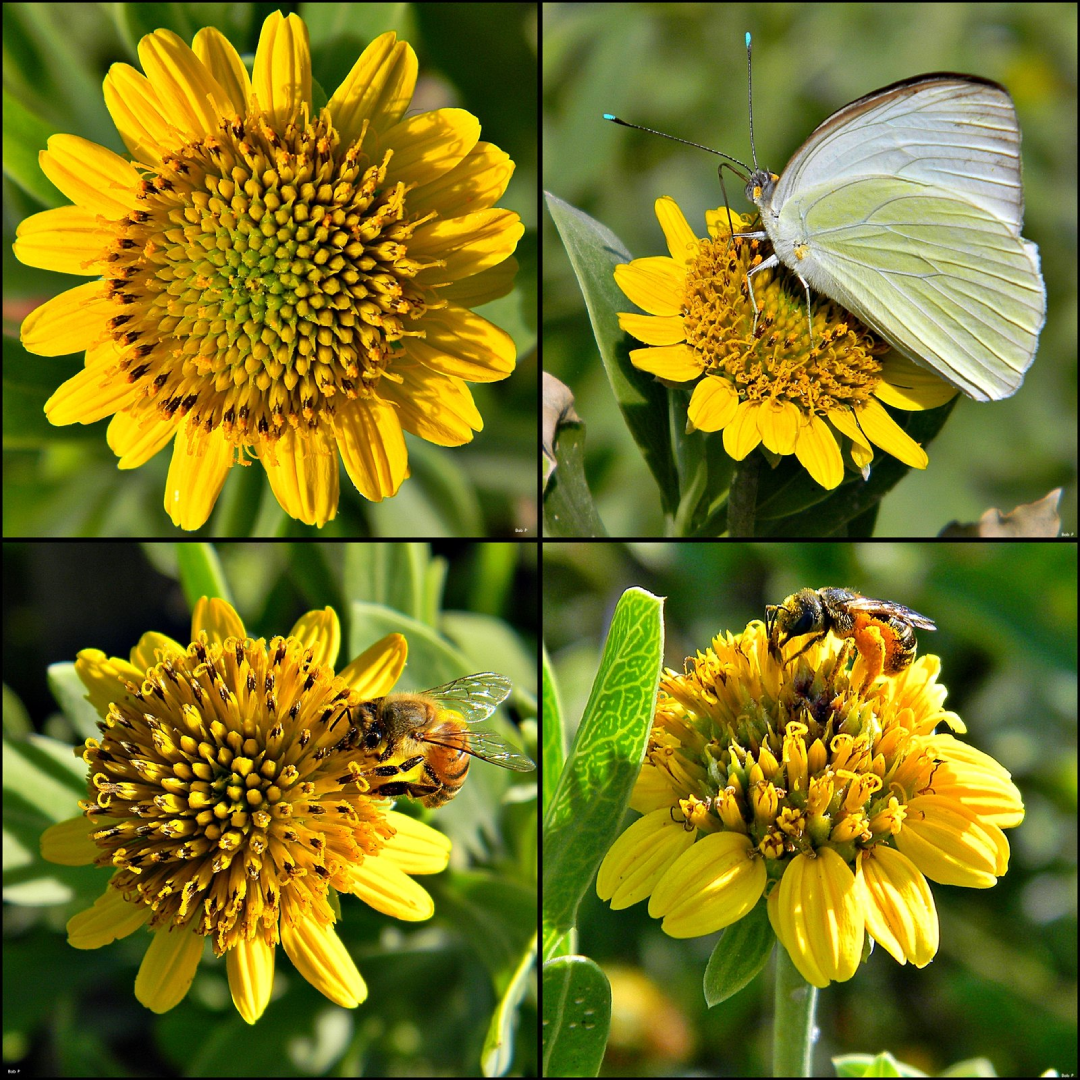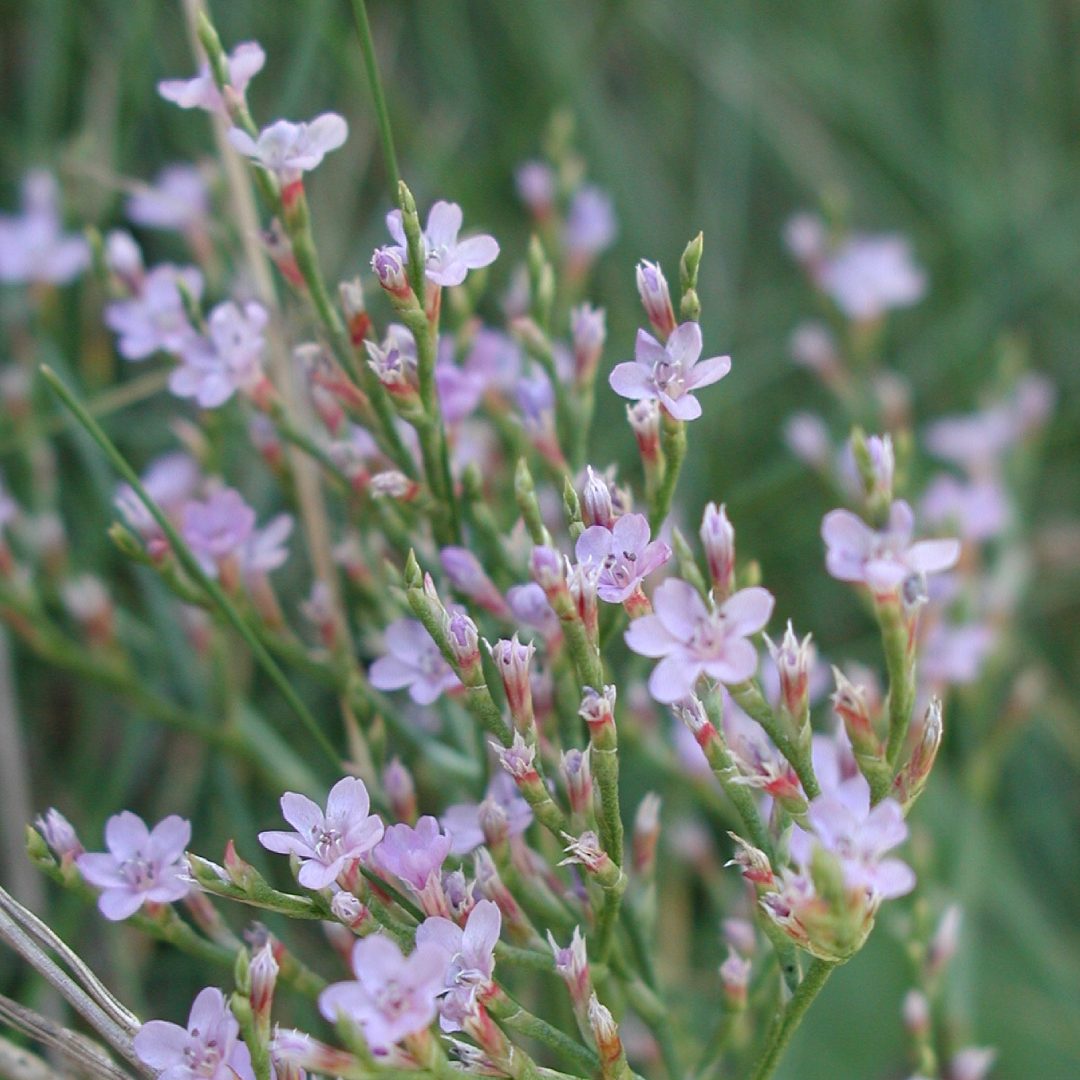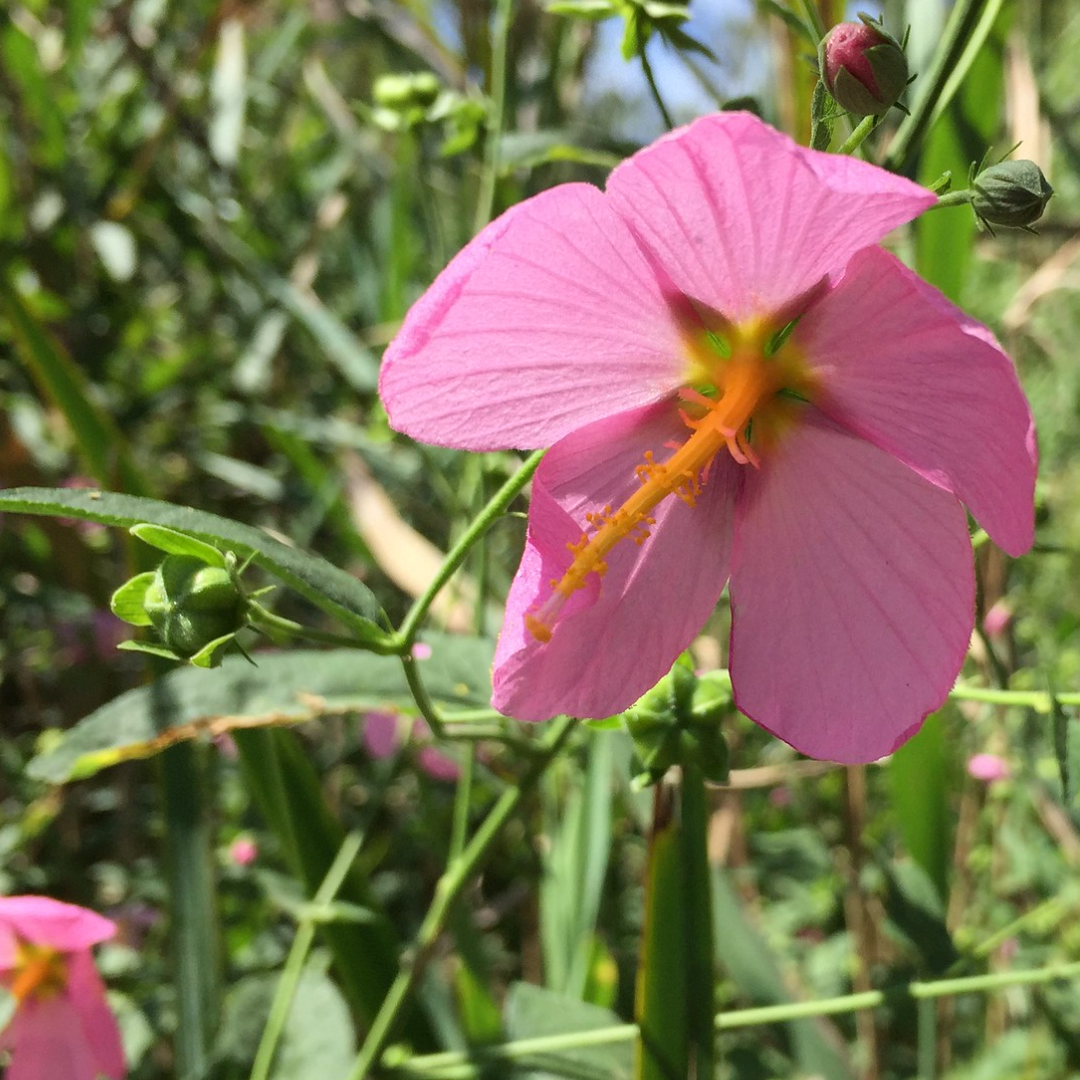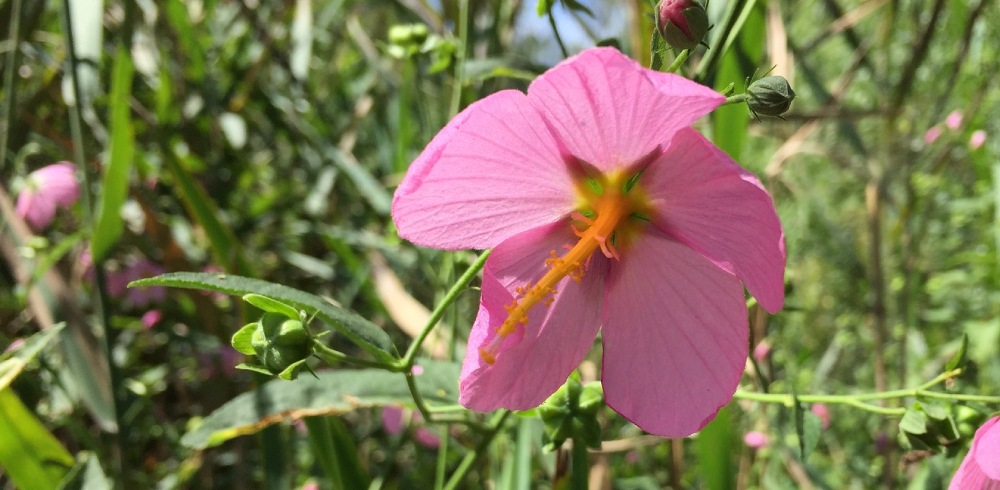
Salt marshes are not the first places that come to mind if you would like to go daisy picking, but Sea Oxeyes (Borrichia frutescens) are producing some very colorful, showy yellow flowers. Blooms are often covered in a variety of pollinators such as mason bees and a butterfly, the saffron skipper, that call our saltmarshes home. Their thick, succulent leaves offer extra protection in the harsh and salty environment. These hardy plants can be found in the upper reaches of brackish and salt marshes, where they can tolerate flooding from storms and occasional King tides.
Sea Lavender (Limonium carolinianum) is another inhabitant of high marshes, where the upper elevations can support a more diverse plant community. While not closely related to the lavender that blankets the French countryside, sea lavender closely resembles its European namesake with small purple flowers. Their gorgeous inflorescence has been harvested for floral arrangements. This amazingly tough plant lives in marshes from Canada to Mexico.


Salt Marsh Mallow (Kosteletzkya pentacarpos) is a weird species of hibiscus that can be found in brackish and freshwater tidal marshes. They grow as medium sized shrubs that can be covered with many dozens of pink flowers. With their elongated and fused stamens and styles, these flowers can provide a source of food to hummingbirds and monarch butterflies while being pollinated at the same time. While common in North America, saltmarsh mallow is also native to Eurasia where its populations are much smaller and fragmented.
Want to do some exploring and see some of these marsh plants yourself? Be sure to join the James River Association on some of our Connect with the James paddles for a guided adventure through some our wonderful native habitats!

